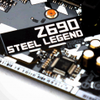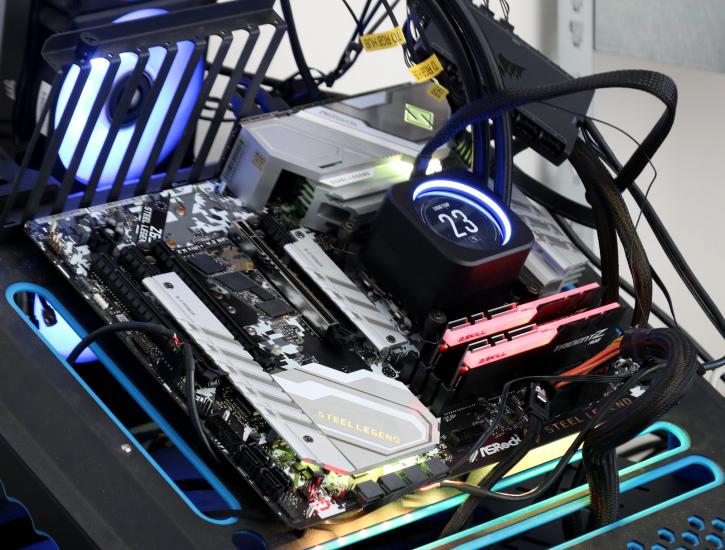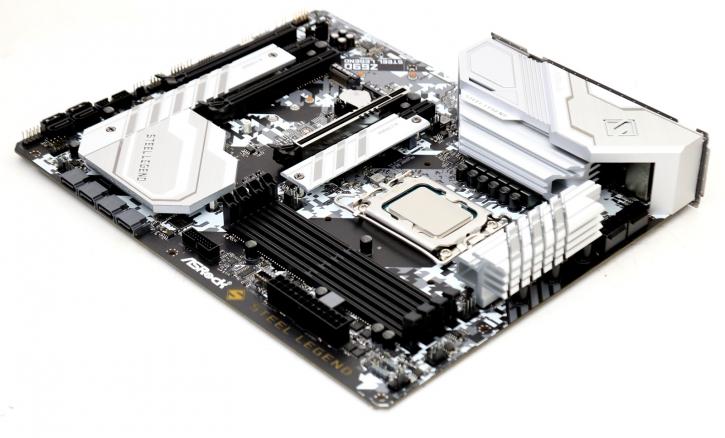Final Words & Conclusion
Final Words
For this review, we used a DDR4 3600 CL16 kit (slightly sharper timing than normal, and it is nearly bothersome to see how close performance is compared to a DDR5 5200 MHz CL40 setup. For the money, what a fine motherboard this is though! ASRock LGA1700 / Z690 boards are available in both DDR5 and DDR4 memory technologies. DDR5 frequency and timings will improve over time, but as you've been able to see early-adopting of this technology might be an expensive road to pursue. We feel 5200 MHz is the DDR5 sweet spot, however, CL40 is the vexatious factor. DDR4 might be a more valuable road to follow, with little to no performance differentials.
While we would normally recommend DDR5 usage in favor of DDR4 on Alder Lake, we have to factor in the component shortage, and DDR4 memory certainly is cheaper than a 5200 MHz DDR5 kit. In that respect, it can make absolute sense to re-use that DDR4 of yours on a compatible Z690 motherboard in combination with any Alder lake Core 12th gen processor of choice, as really, the differential in between the two technologies currently is petite, whereas you can easily save 50~75 bucks with such a decision. But strictly looking at things from a performance point of view, really at this day and age the differential just ain't substantial enough ...
Energy efficiency
Added chips, RGB, and BIOS configuration are a bothersome factor when testing stuff like this. the Steel legend performs quite well with comes back at 50Watts power draw in IDLE. Under total stress on the processors, the system comes back at roughly 325 Watts, and overclocked, we passed 450 Watts. Energy efficiency for this motherboard and processors as such are average at best. Keep that in mind with your cooling choice, as processor wattage usually is 1:1 in line with cooling performance. We recommend an excellent LCS.
Noteworthy is that Intel no longer provides a total design power (TDP), instead referring to a 'processor base power' of 125W and a 'maximum turbo power' that is significantly greater. Intel, at the very least for the overclockable K processors, has ended the confusion that the PL1 and PL2 power constraints produced in previous generations with this announcement. The current norm for these CPUs is that they can boost indefinitely unless the PC maker (or, in the case of self-build, the user) decides otherwise to keep within the limitations of the cooling and power supply systems.
Overclocking
We see the same results on all Z690 motherboards we tested; ergo, the limiting factor is the processor and not the motherboard. Depending on your objectives, there are numerous approaches to overclock an Intel platform. With the Core i9-12900K, you'll achieve roughly 5.3 GHz across all performance cores. And the proc is going to need something like 1.4 Volts. Most modern motherboards will have an automated setting for that. All eight performance cores were overclocked to 5.3 GHz but at the cost of yet another 125W in energy consumption. We gained 5% extra performance due to this. As such, we feel overclocking is a bit unneeded, perhaps even an illogical thing to do. But you can if you want to, and this platform certainly will assist you greatly with it.
The conclusion
If it's the greater value that you are after (or just have budgetary limitations) then the Z690 Steel Legend remains to be a more affordable motherboard at ~250 USD (but still is a lot of money). The usage of DDR4 is a benefit in overall value as well. We do recommend a DDR4 3600 CL 16 or 18 kits. This will help you shave off 75 USD of your build whilst the performance differential is close to NIL aside from a small differential here and there. A more value board does offer fewer features, but with a Dragon (Realtek based) 2.5 GigE ethernet jack, eight SATA3 ports, HDMI and DP, and three M2 slots, I think 95% of your needs are covered. The board still looks nice, has some RGB elements, and other than that is simply performing outstandingly well for a DDR4 board. The 13 phase 50A stage power delivery we do not see as a limiting factor either. Concerning the TDP values of the 16-core top model Core i9-12900K with its 241 watts, this is not surprising, especially when considering the overclocking capabilities of the processor itself. Two P8 power plugs have been provided to ensure that you do not run out of breath while working here. In our belief for lots of people, Alder Lake is what they've been waiting for, a completely new architecture with improved IPC and fabulous overall performance, so lots of people will make the step to upgrade as it also brings PCIe Gen 4.0 and 5.0 as well as DDR5 support and WIFI6E to the table. For 20 bucks more a WIFI6E enabled version is available also, which I would opt without hesitation. In the end, we feel that ASRock has a compelling offer with the Steel legend. It might not sit in that uber-high premium segment, but has the price that fits + you'll save on the bill of cost for not using DDR5. Definitely recommended.
- Sign up to receive a notification when we publish a new article
- Or go back to Guru3D's front page.




